CONTACT USThank you for your interest in The Skatepark Project
Please see our frequently asked questions below and feel free to reach out if you have any further needs. If you’re looking for Skatepark Development resources, click here.
To contact someone from our team, please reach out to: contact@skatepark.org
For media or press inquiries, please contact: press@skatepark.org
The Skatepark Project
1611 S. Melrose Drive,
Suite A #360
Vista, CA 92081
FAQs
Most of our frequently asked questions can be answered in more detail by referencing our Skatepark Development resources.
ABOUT THE SKATEPARK PROJECT-
The Skatepark Project (formerly the Tony Hawk Foundation) was founded by Tony Hawk in 2002. For more information about our mission and origin story, please visit About Us.
-
The Skatepark Project does not have a team or offer sponsorships.
-
TSP’s impactful work is made possible with the support of many partners. Each partnership may look slightly different from the next, but with their support, we can help create safe, inclusive spaces where everyone can experience the joy of skateboarding. Together, we drive local advocacy, launch programs for youth development, and open up access to skateparks for all, no matter their background.
By teaming up with us, our partners help make communities stronger, grow our programs, and ensure our impact reaches as many people as possible. To learn more, please visit Our Partners.
-
The Skatepark Project is funded by individual donors, brands, corporations, and foundations. Our work is made possible by the generosity of dedicated donors and partners like you!
Please visit our Donate page for details on how to support our mission and check out Our Partners page to learn more about partnership opportunities with TSP.
-
There are a variety of ways to support The Skatepark Project. We accept one-time and recurring donations, corporate matching gifts, stock donations, donor-advised fund contributions, and more. For more details on how to give, please visit our Donate page.
-
Yes, all donations to The Skatepark Project are tax-deductible to the extent allowed by law, provided no goods or services were received in exchange. You will receive an email confirmation, which serves as your tax receipt after submitting your donation.
-
Yes. The Skatepark Project is a 501(c)(3) tax-exempt organization. This means we are a non-profit organization, and your donation to The Skatepark Project is tax-deductible. Our tax ID number is: 33-0965889
ABOUT TONY HAWK-
The Skatepark Project, a 501(c)(3) tax-exempt organization, was founded by Tony Hawk in 2002 under its former name, the Tony Hawk Foundation. For more information about our mission and origin story, please visit About Us.
-
Tony Hawk and other pros visit public skateparks and attend charitable events at their sole discretion. If you’d like to contact any pro-skaters or celebrity supporters of The Skatepark Project, we advise you to reach out to them directly, as TSP is unable to contact or negotiate on behalf of third parties, including nonprofit organizations and local skatepark projects.
For requests specifically related to Tony Hawk, please visit tonyhawk.com.
CREATING SKATEPARKS-
The Skatepark Project is dedicated to providing resources tailored to each community's specific needs, from offering grants for public skatepark/skate spot development and support in the form of resource materials, guidance, and grant funding, to programming that activates those spaces.
Our community-focused approach drives each program and each skatepark project. Our programs are fueled by local community members, skatepark users, municipalities, and social skate organizations. Whether we are helping to build a new park, refurbishing a historical skate spot, or delivering skate programming to youth, our work is designed by the community, for the community.
Please visit Our Programs for a comprehensive list of all of our community programs and grant opportunities.
-
The first step to getting a grant from The Skatepark Project is determining what type of grant you need. Please visit Our Programs to review all our current grants and programs offered at TSP and the corresponding application process.
-
A public skatepark is a purpose-built recreational facility, typically outdoors, designed for skateboarding, BMX, Wheelchair motocross, inline skating, rollerskating, and scootering, that is unsupervised while being owned and maintained by a city, municipality, or other governmental agency, and open to the public for free.
-
There are too many benefits of skateparks to list in one place. There are the physical, social, and mental health benefits of providing a facility for people, particularly at-risk youth, to pursue an accessible athletic activity that they love. There are public health benefits to having a safe place for young people to develop active lifestyles away from the risks of inactive and antisocial behavior.
To learn more about the benefits and impact of skateparks and skateboarding, please visit Our Impact and be sure to download our USC Study: Beyond the Board and other relevant resources on our Skatepark Development page.
-
The Skatepark Project can’t come to your town and build you a skatepark, but we can help you generate a volunteer-run public skatepark project that works with the city to get it done. We can provide guidance and possibly some funding along the way. As a local, you’ll be expected to prepare your town for the skatepark by organizing an advocacy group, promoting the need for a skatepark to fellow citizens, getting approvals from local leaders, and giving local skaters a voice in the process.
We recommend you check out TSP’s robust offering of Skatepark Development resources. These advocacy tools have been helping communities navigate the skatepark development process for decades. You can also contact us directly. Visit Contact Us to ask for advice on getting started. We’d be happy to help you out.
-
There are multiple types of skate spaces. While they all share a similar purpose, it’s important to know the differences and what may be right for your community or your group.
Neighborhood Skatepark
Neighborhood concrete skateparks are around 10,000 square feet, no less than 6,000 square feet. This is the size of the average public skatepark.Regional Skatepark
The regional skatepark is often 30,000 sq. ft. or more and serves the city it’s in, plus the surrounding region.DIY Skatepark / Community Build
“Do It Yourself” skateparks have been around for a long time and embody the creative and persistent spirit of skateboarding. These parks are hand-built by locals, sometimes without permission, sometimes with permission from the city or property owner. Some turn into bona fide public skateparks and some are torn out unceremoniously.Skate Spot
Skate Spots or Skate Dots (not to be confused with the common street skate spot) are smaller skate areas with only a few skateable elements. These can be peppered throughout a city’s interconnecting public access ways. Sometimes referred to as dots.Legalized Skate Spot / Liberated Spot
These are street spots that have been liberated (made legal) through local advocacy and cooperation between the skate community and the city/property owner. Examples include the Brooklyn Banks in NYC, the Tacoma, WA ledges, the South Bank in London, England, and the West LA Courthouse in Los Angeles, CA.Temporary Skatepark
Prefabricated or non-concrete skateparks can be a worthwhile consideration when utilizing an existing slab. Though constrained by limited design options, there can be instances where a prefabricated park is a valuable skate amenity for the community. They can be a cheaper alternative to concrete, but they will need ongoing maintenance and only last a few years. They are considered a temporary solution, so spending all of your budget on brand-new prefabricated skateparks is discouraged. Consider using an existing slab/lot with a few basic skatepark elements (possibly even safe DIY options) and working toward the permanent, custom, community-designed cast-in-place concrete skatepark. -
In general, every town needs a skatepark. The true “Skatepark Need” of a community depends on the size of your community and what existing legal skate space already exists.
One way to find out what size skatepark you need or how many skateparks you need to serve your community is to use the Skatepark Adoption Model. The short form of this model equates to a community needing 10,000 sq. ft. of contemporary skatepark space for every 25,000 residents. However, it’s important to utilize the full SAM model if running a full skatepark advocacy project. -
We recommend you check out TSP’s robust offering of Skatepark Development resources. These advocacy tools have been helping communities navigate the skatepark development process for decades. Many skatepark groups credit the Public Skatepark Development Guide as their single most important source of guidance and data.
You can also contact us directly. Visit Contact Us to ask for advice on getting started. We’d be happy to help you out.
Public skatepark projects are always the result of a dedicated team of locals and city officials working together to achieve the goal. Read on from your particular perspective:
As a local: (A Skater, Parent, Teacher, Local Resident)
Nearly all public skatepark projects start with a local resident who takes it upon themselves to work toward creating more skate space in town. This usually results in them creating and managing a public skatepark project. Almost always a self-elected volunteer position, many “skatepark advocates” start with little knowledge or experience of public projects. They learn along the way, often using resources and guidance available through The Skatepark Project and advice they get from their allies in the local government.
The focus of The Skatepark Project is to help individuals like yourself follow best practices for establishing and completing a successful skatepark project.
You can get free guidance and technical assistance from our staff. If you have questions, need help with an existing project, or have decided to start a new skatepark project, you can connect with us by using the contact button above.
For a municipal employee or parks professional:
Every public skatepark is the result of dedicated civil servants engaging with locals and understanding the needs of the community.
Often, this means taking steps to make the project a priority and putting resources behind it. Some start the project themselves, and some learn about the need and choose to act. Wherever someone starts, the Skatepark Project is here to assist municipal employees in their efforts to generate, complete, or support local public skatepark projects.
Our Programs team is ready to offer free, unbiased skatepark project development guidance, technical assistance, and grant funding. We’ve been involved with thousands of projects over the last 20 years and intend to help you complete a public skatepark project efficiently and up to contemporary standards.
First Step Resources: To start, head to our Skatepark Development page to learn as much you can from the Skatepark Best Practices Guide and Public Skatepark Development Guide.
Watch this video: How To Get a Skatepark!
Reach out directly: Head to Contact Us and ask for some advice on next steps. We’d be happy to help you out.
-
If you are pursuing a single skatepark and have no intention to engage in fundraising after the park is open (skate programming or expansions, for example), then there is little reason to launch an independent nonprofit organization. Instead, establish a partnership with another local nonprofit that can provide nonprofit status to your effort. You will essentially be fundraising on behalf of this organization, and it will be acting as your group’s “fiscal sponsor” (or “fiscal agent”). This is a common practice in skatepark projects. Please visit this page for more information.
-
Hire a specialty skatepark contractor who has built at least a few quality skateparks, particularly if the skatepark design includes complex transitions and other unique features—these types of skateparks should always be built by firms specializing in skatepark construction.
The single most important thing you can do is help everyone, including city staff and elected officials, understand the importance of hiring a qualified, experienced skatepark designer/builder. It is common to have general contractors hire experienced skatepark specialty subcontractors to do the skatepark work if there are other separate site improvements involved in the larger project. But the skatepark work should always be done by an experienced skatepark builder.
Modern skatepark design should include all types of riders at all skill levels and green infrastructure. The local skatepark advocates will work with the skatepark designer through a series of public feedback sessions to ensure that their community’s specific requests and needs are met where possible. The specialty skatepark design firm will then use its experience to shape a contemporary design given the parameters, ultimately creating a safe, inclusive, engaging, and accessible space for all locals to enjoy for decades. Learn more about skatepark design in the Skatepark Best Practices Guide which can be found on our Skatepark Development page.
If you’re serious about your skatepark project, take five minutes to learn about ensuring quality in design and construction.
-
The best way to understand this on a local level is to call the nearest city in your state with a contemporary unsupervised skatepark and ask the City Manager about the specific state code that absolves cities in your state from liability. You can then consider connecting them to the person you’re working with in your city to see if they can go over any additional questions.
To learn more, please visit the skatepark liability page in our PSDG. -
Check out The Skatepark Project’s mobile app in the Apple App Store. It’s one of the most robust collections of skatepark information available, and it’s updated daily. Join thousands of users working together to catalog and clarify information about public skateparks, retail skateparks, and skate shops.
ABOUT THE SKATEPARK PROJECT GRANTS-
The Skatepark Project has helped fund skateparks in all 50 states. Visit Our Impact for a complete map of all the communities we’ve supported.
-
Yes. Our Skatepark Development resources, technical assistance, and office hours can be of help to any community in pursuit of a new public skatepark.
And starting in 2025, we have begun an international grant program. Visit our International Skateboarding Program page for more info.
-
Starting in 2025, we have begun an international grant program. Visit our International Skateboarding Program page for more info.
-
No. Given our limited resources and unprecedented demand for our services, we are unable to contribute to domestic projects that are not specifically skatepark-related or international programs that we have not thoroughly researched and initiated contact with.
-
Yes. We encourage you to apply. However, your chances of earning a grant may be reduced if your community currently has enough skate space to meet the need. Use the Skatepark Adoption Model to calculate your community's needs relative to the skate space already available.
-
Yes.
-
Yes, in fact, we encourage it.
Visit Our Programs to review all our current grants and programs offered at TSP and the corresponding application process.
-
OFFICE HOURS – Thursdays at 4 PM PST. This group meeting is focused on skatepark technical assistance. Examples of our technical assistance include: skatepark planning questions (site, funding, design, construction), dealing with opposition, grant funding questions, etc. Registration for office hours is required.
SKATEPARK OPERATIONS-
Skatepark rules can vary widely from park to park. Rules will be based on state and local laws, insurance requirements, and community interest. Some parks have lengthy rules governing everything from general behavior (“Respect yourself and others”) to specific notices (“open from dawn until dusk”). Some skateparks simply read “skate at your own risk” and leave it at that, and many don’t post rules at all.
To learn more about skatepark policies and what to avoid, continue reading HERE.
-
The Skatepark Project enthusiastically encourages helmet use whenever a skateboard is used. However, while state, county, or city ordinances may require helmets and/or pads, it does not always translate well into skatepark policy.
-
Concrete is by far the better solution for skatepark construction. The benefits of concrete eclipse those of wood or steel ramp-style parks in every way.
To learn more about recommended skatepark materials and best practices, continue reading HERE.
-
There are approximately 4,000+ skateparks in the United States, but lawsuits against the managing agencies are virtually unheard of. Liability law varies from state to state, so there is no simple answer. The best way to assess potential risk is to consult with other communities in your state with skateparks. Check out the PSDG for more info on skatepark safety and liability.
-
The Skatepark Project recommends free, unsupervised skateparks that are administered like other athletic facilities. The expense of adding full-time employees can be a burden on a tight budget, add liability, and bring additional limiting constraints on the end users. Supervision is not likely to enhance a skater’s experience or reduce the likelihood of injury. Therefore, the easy answer would be to open your park and let the skaters ride it at will, without an on-site monitor.
-
Yes. The Skatepark Project supports equal inclusion of BMX, roller/quad skaters, inline skaters, scooter riders, Wheelchair Motocross riders (WCMX), and other non-motorized wheel sports. By modern definition, skateparks are “all-wheel” parks.
-
Skateboarding is as safe or safer than many other sports, especially when practiced in a properly designed and built skatepark.
Visit our Public Skatepark Development Guide for more information on safety and skateboarding.





